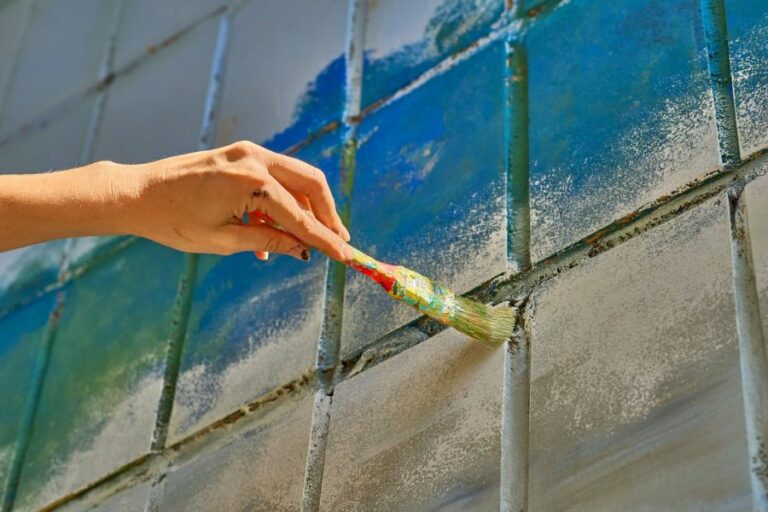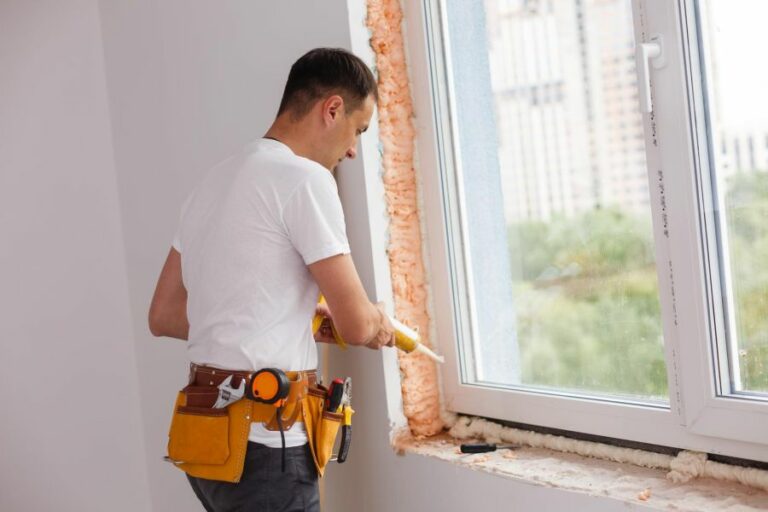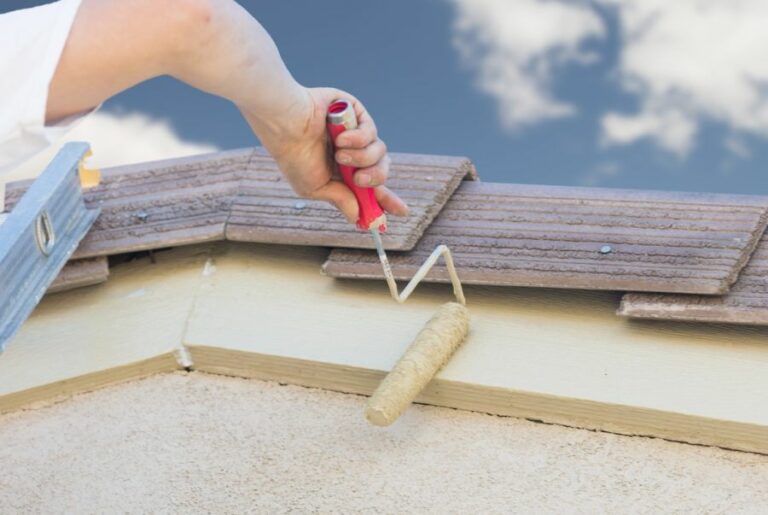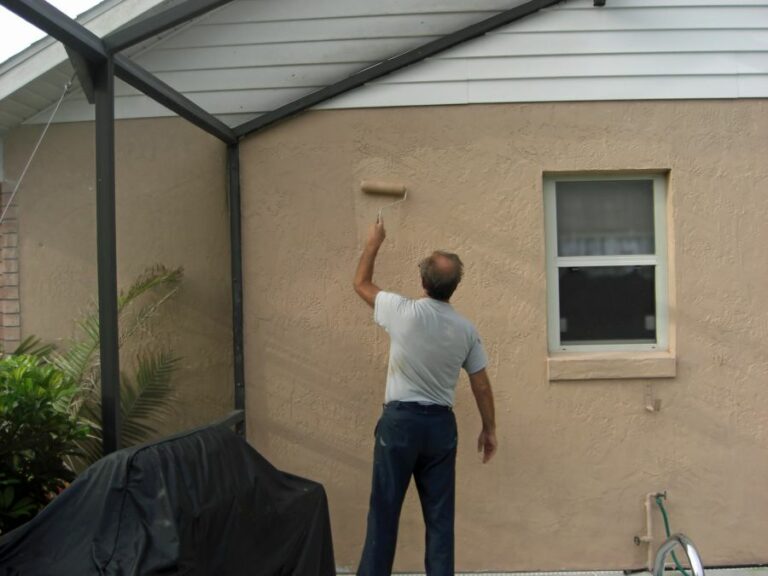Mastering Dirt Removal Using Wire Brushes, What Pros Say
Have you ever struggled to remove stubborn dirt and grime from various surfaces? Look no further, as we’ve got the perfect solution for you! Introducing the art of mastering dirt removal using wire brushes, a truly effective way to achieve sparkling-clean surfaces with minimal effort. Our expertise in this field will undoubtedly guide you in selecting the right tools and techniques for an efficient and satisfying cleaning experience.
Mastering dirt removal using wire brushes:
Mastering dirt removal using wire brushes involves selecting the appropriate brush based on material, dirt type, and surface tolerance, following safety precautions such as wearing protective gear and securing the workpiece, and employing effective techniques like short, quick strokes or gentle surface contact. Proper maintenance and storage of brushes ensure longevity and efficiency.

Dirt removal can be an overwhelming task, but with the right techniques and tools, like wire brushes, you can achieve a new level of cleanliness. Read on to unveil expert tips and tricks for mastering dirt removal and transforming the way you tackle grime and stubborn stains.
Contents
- 1 Expert Techniques for Dirt Elimination with Wire Brushes
- 2 Is Dirt Removal Possible with a Wire Brush?
- 3 Various Cleaning Applications of Wire Brushes
- 4 Wire Brush: An Effective Tool for Easy Removal?
- 5 Pre-Cleaning Considerations: Is a Wire Brush Suitable?
Expert Techniques for Dirt Elimination with Wire Brushes
• Introduction
Wire brushes are versatile tools widely used for cleaning and maintenance purposes in various industries, as well as in households.
• Importance of Wire Brush Selection
Choosing the right wire brush goes a long way in achieving desired results. Factors to consider when selecting an appropriate brush include the type of material being cleaned, the nature of dirt, and the surface’s tolerance to scratching or abrasion.
– Materials of Wire Brush Bristles
Wire brushes usually consist of either brass, stainless steel, or carbon steel bristles.
- Brass: Suitable for cleaning softer materials such as wood or plastic, brass bristles provide a gentle yet effective cleaning method without causing too much surface damage.
- Stainless Steel: Ideal for cleaning corrosion-prone metals such as aluminum or stainless-steel surfaces, these bristles are resistant to rust and offer excellent durability.
- Carbon Steel: Known for its aggressive cleaning action, carbon steel bristle brushes work best on heavy-duty dirt and rust removal on materials that can withstand tough scouring.
– Types of Wire Brushes
- Handheld: These brushes are available in varying sizes to cater to various cleaning needs. They are useful for spot cleaning and small-scale dirt removal tasks.
- Bench Grinder: Bench grinder wire brushes attach to grinder machines, facilitating heavy-duty cleaning, polishing, and rust removal.
- Cup Brushes: These can be attached to power drills and are suitable for reaching tight, complex spaces, such as the insides of pipes or corners.
• Safety Precautions
When working with wire brushes, taking appropriate safety measures is crucial to avoid accidents or injuries. Here are some practical safety guidelines:
- Wear Protective Gear: Use gloves, eye protection, and a dust mask to protect yourself from flying debris, bristle shedding, and dust inhalation.
- Secure the Workpiece: Ensure the workpiece is firmly secured in place using clamps or a vise, to prevent it from moving or slipping during the cleaning process.
- Inspect the Wire Brush: Examine the wire brush for any loose or damaged bristles before using it.
- Adhere to Tool Manufacturer Instructions: If using a power tool, always adhere to the manufacturer’s guidelines regarding recommended RPM, attachments, and safety protocols.
• Dirt Removal Techniques
– Handheld Wire Brushes
- Choose the Appropriate Bristle Material: Select the right wire brush depending on the material being cleaned and the dirt to be removed.
- Hold the Brush Firmly: Gain better control over the cleaning action by grasping the wire brush handle tightly with one hand and supporting the workpiece with the other hand.
- Short, Quick Strokes: Apply short, quick strokes with firm pressure to effectively loosen dirt, grime, or rust. Vary the pressure based on the surface’s tolerance.
– Bench Grinder Brushes
- Secure the Workpiece: Firmly clamp the workpiece to ensure it remains stable during the cleaning process.
- Maintain a Safe Distance: Keep a safe distance from the rotating brush to prevent accidents or injuries.
- Gentle Surface Contact: Avoid applying too much pressure while bringing the workpiece in contact with the brush. Instead, allow the rotating bristles to do the work effectively and efficiently.
– Cup Brushes
- Ensure Correct Attachment: Verify that the cup brush attaches securely to the power drill, as per the manufacturer’s instructions.
- Position the Cup Brush Appropriately: To maximize contact with the surface, position the brush perpendicular to the workpiece.
- Controlled Movement: Move the brush slowly and deliberately across the surface, starting with lighter pressure and gradually increasing it based on the dirt removal progress.
• Maintenance and Storage
Proper care and storage of wire brushes extend their life and effectiveness. Regularly inspect the brushes for wear, and clean them with a soft brush or compressed air to remove any residual dirt or debris. Store wire brushes in a clean, dry location, away from direct sunlight or heat sources.
• Conclusion
Mastering dirt removal using wire brushes involves selecting the appropriate brush, following the recommended safety precautions, and employing the right techniques.
By investing in a quality wire brush and heeding these guidelines, achieving exceptional results in maintaining clean and dirt-free surfaces becomes an attainable goal.
Is Dirt Removal Possible with a Wire Brush?
• Introduction
A wire brush, an oft-overlooked and humble member of the cleaning world, is in fact a versatile and highly effective tool when it comes to removing dirt and grime from various surfaces.
• Types of Wire Brushes
– Metal Wire Brushes
These brushes are typically made from steel, brass, or bronze wires. Steel wire brushes are highly effective at removing stubborn dirt and rust from surfaces. Brass wire brushes are softer, making them suitable for cleaning softer metals without causing damage.
Bronze wire brushes are used where there is a risk of sparks or explosions, as they do not cause sparks upon contact with other metals.
– Synthetic Wire Brushes
These brushes are made from materials such as nylon or polypropylene. They are softer and more flexible than metal wire brushes, making them ideal for cleaning delicate surfaces without causing damage.
• Surfaces Wire Brushes Can Clean Effectively
– Metal Surfaces
Wire brushes excel at cleaning and restoring metal surfaces by removing rust, dirt, and other contaminants. This is an essential task for maintaining machinery, tools, and even automobiles.
– Flooring
Whether it’s concrete, wood, or tile, a wire brush can effectively remove dirt and grime from these surfaces when used with the appropriate cleaning solution.
This is especially useful for cleaning grout between tiles, removing built-up dirt in the grooves of wood flooring, and scrubbing away aged spills on concrete surfaces.
– Barbeque Grills
A wire brush is an essential tool when it comes to maintaining a clean and hygienic barbeque grill. It removes burnt food particles and grease buildup on the grates, allowing for better heat distribution and reducing the risk of flare-ups.
– Painted Surfaces
When used with care, a wire brush can remove dirt, loose paint, or even graffiti from painted surfaces without causing significant damage. This is especially helpful when preparing a surface for a new coat of paint.
• Expert Tips and Tricks for Using a Wire Brush
– Choose the Right Wire Brush for the Job
Using the appropriate wire brush for the task at hand is critical to achieving the best results without causing damage to the surface being cleaned. Always select a brush with the correct wire type and size to suit the surface and type of dirt.
– Apply the Proper Pressure
When using a wire brush, it’s essential to apply the correct amount of pressure during the cleaning process. Too much pressure can cause damage to the surface, while too little pressure can fail to remove the dirt effectively. Start with gentle pressure and gradually increase it until the dirt is removed.
– Use a Cleaning Solution
For enhanced cleaning power, using cleaning solutions specifically designed for the surface in question can produce better results. Follow the manufacturer’s instructions for the appropriate ratio of solution to water, and apply it to the surface before using the wire brush to scrub away the dirt.
– Clean the Wire Brush Regularly
A dirty wire brush will not be as effective in removing dirt and may even end up depositing contaminants back onto the surface. Be sure to clean the wire brush thoroughly after each use and allow it to dry fully before storage.
• Safety Precautions
Always wear appropriate safety gear, such as gloves and eye protection, when using a wire brush. Additionally, be aware of the potential for loose wire bristles to break off the brush during use, and keep an eye out for any stray bristles while cleaning.
• Conclusion
In conclusion, a wire brush is an effective tool for removing dirt from a wide range of surfaces when used correctly.
By selecting the right type of brush, applying the appropriate pressure, and following expert tips and tricks, wire brushes can be an invaluable asset in keeping various surfaces clean and well-maintained.
Various Cleaning Applications of Wire Brushes
Whether you are a professional in the maintenance industry, a dedicated DIY enthusiast, or simply someone who likes to keep their surroundings spotless, a wire brush is a versatile and indispensable tool.
• Surface Preparation With A Wire Brush
– Removing Rust and Corrosion
A wire brush is an excellent choice for removing rust from metal surfaces. Whether tackling small spots of rust on tools and equipment or larger areas of corrosion on things like gates and fences, a wire brush is a cost-effective solution.
I recommend using a wire brush with stainless steel bristles for maximum effectiveness in removing rust. The hardness of the stainless steel allows it to quickly cut through the rust without damaging the underlying surface.
– Cleaning Masonry and Concrete
Wire brushes are essential for removing dirt, mold, and mildew from masonry and concrete surfaces. They can be used to clean brickwork, concrete paths, and even statues.
When working on masonry or concrete, a wire brush with stiff brass or steel bristles is recommended. The sturdiness of these bristles ensures thorough and efficient cleaning.
– Preparing Surfaces for Painting
Before painting or refinishing a surface, it is crucial to ensure that it is clean and devoid of flaking paint or residue. A wire brush can be used to efficiently remove old paint, creating a smooth surface for the new paint to adhere to.
A wire brush with softer brass bristles is recommended for removing paint from delicate surfaces like wood to avoid damaging the material. Steel bristles, on the other hand, are well-suited for paint removal from metal surfaces.
• Cleaning Tools and Equipment With A Wire Brush
– Maintaining Garden Tools
A wire brush is indispensable for properly caring for and maintaining garden tools like shovels, trowels, and rakes. Use a wire brush to remove dirt, mud, and rust, and you’ll extend the life of your tools and improve their performance.
– Scrubbing Barbecue Grills
Wire brushes are essential for keeping barbecue grills clean, functioning optimally, and preventing contamination. Use a wire brush after each use to remove any food remnants or soot that can accumulate on the grill’s cooking surface.
However, be cautious when using wire brushes on grills, as ingesting loose bristles can cause health issues. Check the brush regularly for signs of wear and replace it when necessary.
– Automotive Maintenance
Wire brushes are invaluable for cleaning engine parts, removing rust, and other automotive maintenance tasks. Utilizing a wire brush during routine car maintenance can help prolong vehicle life and improve performance.
• Additional Wire Brush Uses
– Cleaning Textiles
Wire brushes can be effective in revitalizing textiles, such as carpets or heavy-duty rugs, by removing embedded dirt and debris. Using a wire brush with softer bristles, such as brass or nylon, will help prevent damage to the fibers.
– Removing Adhesives and Residue
Stubborn adhesives, like glue or old decals, can be challenging to remove. A wire brush can be used to carefully remove these substances without causing surface damage.
– Mold and Mildew Removal
A wire brush can be helpful in removing mold and mildew from surfaces like tiles, grout, and wooden decking before treatment with a fungicide solution.
In conclusion, a wire brush is a versatile and powerful tool useful for a variety of cleaning tasks, from surface preparation to equipment maintenance. With the right wire brush and technique, you can effectively tackle rust, grime, paint, and more.
Consider investing in a wire brush to enhance your cleaning toolkit and elevate your maintenance efforts.
| Items you can clean with a wire brush |
|---|
| Grill grates |
| Outdoor furniture |
| Rusty tools |
| Car parts |
| Dirty shoes |
| Garden tools |
| Pipes and plumbing fixtures |
| Paint and rust removal from metal surfaces |
Wire Brush: An Effective Tool for Easy Removal?
Wire brushes are versatile tools that can be effectively used in various applications across industries, ranging from simple household cleaning to professional maintenance work.
• Types of Wire Brushes
There are several types of wire brushes available in the market, each designed for a specific application. Here are some of the popular options:
– Handheld Wire Brushes
These portable wire brushes can be easily carried and used for cleaning smaller surfaces or hard-to-reach areas.
– Wheel Wire Brushes
These brushes are designed to be mounted on power tools such as drills or angle grinders, enabling rapid cleaning and removal tasks on larger surfaces or rusted materials.
– Tube Wire Brushes
Tube wire brushes are ideal for cleaning the insides of pipes or other cylindrical objects, featuring long handles for extended reach.
– End Wire Brushes
These brushes have a smaller, compact head, perfect for precision cleaning on intricate or delicate surfaces.
• Benefits of Using Wire Brushes
Wire brushes offer a multitude of advantages when it comes to removing various materials from different surfaces. Some key benefits include:
– Versatility
Wire brushes are capable of removing a wide range of materials such as paint, rust, and grime from various surfaces like metal, wood, and concrete.
– Durability
Made of robust steel or brass bristles, wire brushes are built to last and withstand tough removal tasks.
– Efficiency
Wire brushes quickly and effectively remove materials without causing damage to the underlying surface, making them a go-to tool for many professionals and DIY enthusiasts.
– Eco-friendliness
Using wire brushes allows the removal of materials without the need for harsh chemicals, contributing to a greener environment.
• Tips for Using Wire Brushes Effectively
To ensure the best results when using a wire brush, consider the following tips:
– Select the Right Bristle Material
Choose stainless steel bristles for general-purpose cleaning and removal tasks, while brass bristles are better suited for delicate surfaces or non-ferrous materials.
– Use Protective Gear
Before commencing the removal process, always wear protective gear like gloves and safety glasses to prevent injuries.
– Choose the Appropriate Brush Type
Using the correct wire brush type for the task at hand will ensure better results and prevent damage to the surface being cleaned.
– Apply Steady Pressure
Applying consistent pressure when using the wire brush will help improve efficiency while preventing potential surface damage.
– Clean the Wire Brush Regularly
After each use, clean the wire brush thoroughly to remove debris and maintain its effectiveness.
• Industry Applications
Wire brushes are widely utilized across various industries, showcasing their versatility and effectiveness. Some notable applications include:
– Automotive Industry
Wire brushes are commonly used to remove rust, paint, or dirt from automotive parts, engine components, and undercarriage surfaces.
– Construction Industry
Wire brushes aid in cleaning concrete surfaces, removing rust from rebar, and cleaning up excess mortar on masonry works.
– Manufacturing Industry
Wire brushes are utilized in metal fabrication processes to deburr, polish, or clean metallic surfaces before welding or coating.
– Home Improvement/ Maintenance
Wire brushes can be used for various home maintenance tasks like removing paint from furniture, cleaning grills or fireplaces, and scrubbing rusted gardening tools.
• In Conclusion
Wire brushes are an indispensable tool for various removal tasks across industries, boasting versatility, durability, and efficiency. By choosing the appropriate type of wire brush, using protective gear, and adhering to proper usage tips, one can achieve a successful removal process.
For additional information on wire brushes and their applications, consider visiting reputable websites such as the American Welding Society (AWS) to learn more about the impact and best practices of using wire brushes in welding, fabrication, and other industries.
Pre-Cleaning Considerations: Is a Wire Brush Suitable?
Pre-cleaning is a crucial step in various industries, such as painting, welding, and automotive work. It ensures that surfaces are free of contaminants, which can affect the final product’s quality and durability. One commonly used tool for pre-cleaning is the wire brush.
• The Benefits of Using a Wire Brush for Pre-Cleaning
Wire brushes are effective tools for removing rust, scale, paint, and other contaminants from metal surfaces. They offer several advantages over alternative cleaning methods, including the following:
– Enhanced Cleaning Power
Wire brushes provide a high level of abrasion, making them exceptionally skilled at removing stubborn contaminants. Their bristles can effectively scrape away rust, dried paint, and accumulated dirt without damaging the underlying metal surface.
– Time and Labor Savings
Manual scraping and sanding can be labor-intensive and time-consuming. Using a wire brush, either hand-held or attached to a power tool, can significantly reduce the time and effort needed to clean surfaces.
– Versatility
Wire brushes come in various shapes, sizes, and bristle materials, allowing them to be customized for specific tasks or surfaces.
For example, stainless steel brushes are suitable for removing rust from stainless steel surfaces, while brass or nylon brushes are gentler options for delicate or painted surfaces.
– Cost-Effectiveness
Although the initial cost of some wire brushes may seem high, their durability and effectiveness make them a cost-effective cleaning solution in the long run.
• Potential Drawbacks of Wire Brushes
Despite their benefits, there are some drawbacks to using wire brushes for pre-cleaning tasks. It is essential to understand these limitations to ensure proper tool selection and usage.
– Damage to Surfaces
If used improperly or on delicate surfaces, wire brushes can cause damage, such as deep scratches or grooves. This damage may be undesirable, particularly in situations where the aesthetic appearance of the final product is important.
– Debris Generation
Wire brushing can produce considerable amounts of debris, such as dust and metal particles. If not properly managed, this debris can pose health and safety risks or contaminate the work environment.
– Incomplete Cleaning
Wire brushes may not be effective at removing all types of contaminants, such as oils or greases. In such cases, additional cleaning methods, like using solvents, may be required.
• Recommendations for Wire Brush Usage
Based on personal experience and best practices in the industry, the following recommendations can help ensure effective and safe wire brush usage:
– Choose the Right Brush
Select a brush with bristles made of a material suitable for the intended surface. Use stainless steel brushes for stainless steel surfaces, and opt for softer bristle materials like brass or nylon for delicate or painted surfaces.
– Use Proper Technique
When using a hand-held wire brush, apply consistent pressure and work in a uniform direction to minimize the potential for surface damage. When using a power-tool-mounted wire brush, ensure that the brush’s rotation direction is moving away from sharp edges to reduce the risk of injuries.
– Manage Debris
Clean the surface during and after wire brushing to remove debris and minimize the potential for contamination. Utilize personal protective equipment, such as goggles and face masks, to protect against potential health hazards due to dust and debris.
– Combine with Additional Cleaning Methods
For thorough cleaning, particularly when dealing with greases, oils, or other stubborn contaminants, consider supplementing wire brush usage with appropriate solvents or degreasers.
• Conclusion
When used correctly, wire brushes can be an effective and efficient tool for pre-cleaning tasks in various industries. Understanding their benefits and potential drawbacks, as well as implementing best practices, can help ensure successful outcomes in your projects.







